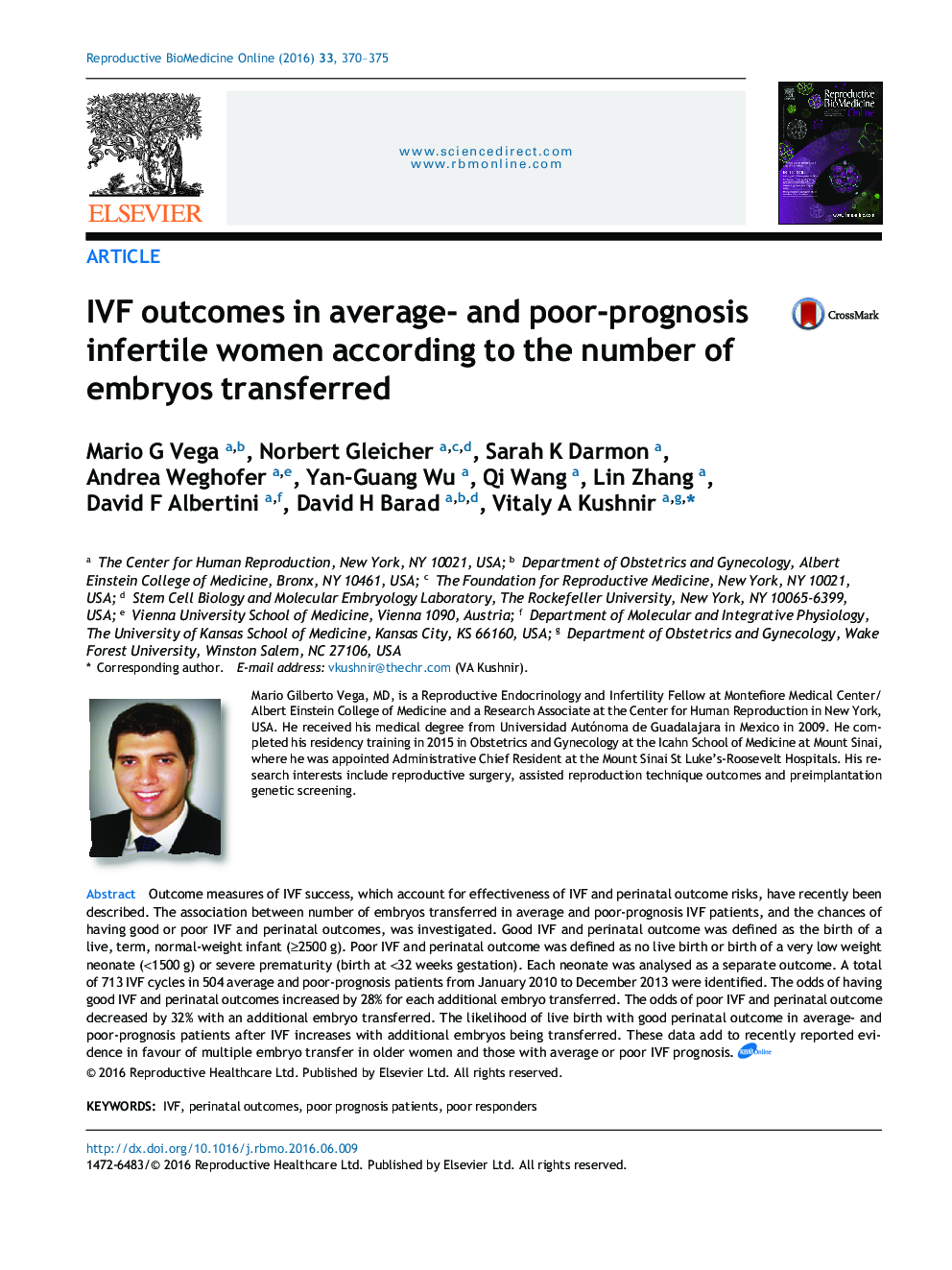| کد مقاله | کد نشریه | سال انتشار | مقاله انگلیسی | نسخه تمام متن |
|---|---|---|---|---|
| 3969929 | 1410279 | 2016 | 6 صفحه PDF | دانلود رایگان |
Outcome measures of IVF success, which account for effectiveness of IVF and perinatal outcome risks, have recently been described. The association between number of embryos transferred in average and poor-prognosis IVF patients, and the chances of having good or poor IVF and perinatal outcomes, was investigated. Good IVF and perinatal outcome was defined as the birth of a live, term, normal-weight infant (≥2500 g). Poor IVF and perinatal outcome was defined as no live birth or birth of a very low weight neonate (<1500 g) or severe prematurity (birth at <32 weeks gestation). Each neonate was analysed as a separate outcome. A total of 713 IVF cycles in 504 average and poor-prognosis patients from January 2010 to December 2013 were identified. The odds of having good IVF and perinatal outcomes increased by 28% for each additional embryo transferred. The odds of poor IVF and perinatal outcome decreased by 32% with an additional embryo transferred. The likelihood of live birth with good perinatal outcome in average- and poor-prognosis patients after IVF increases with additional embryos being transferred. These data add to recently reported evidence in favour of multiple embryo transfer in older women and those with average or poor IVF prognosis.
Journal: Reproductive BioMedicine Online - Volume 33, Issue 3, September 2016, Pages 370–375
